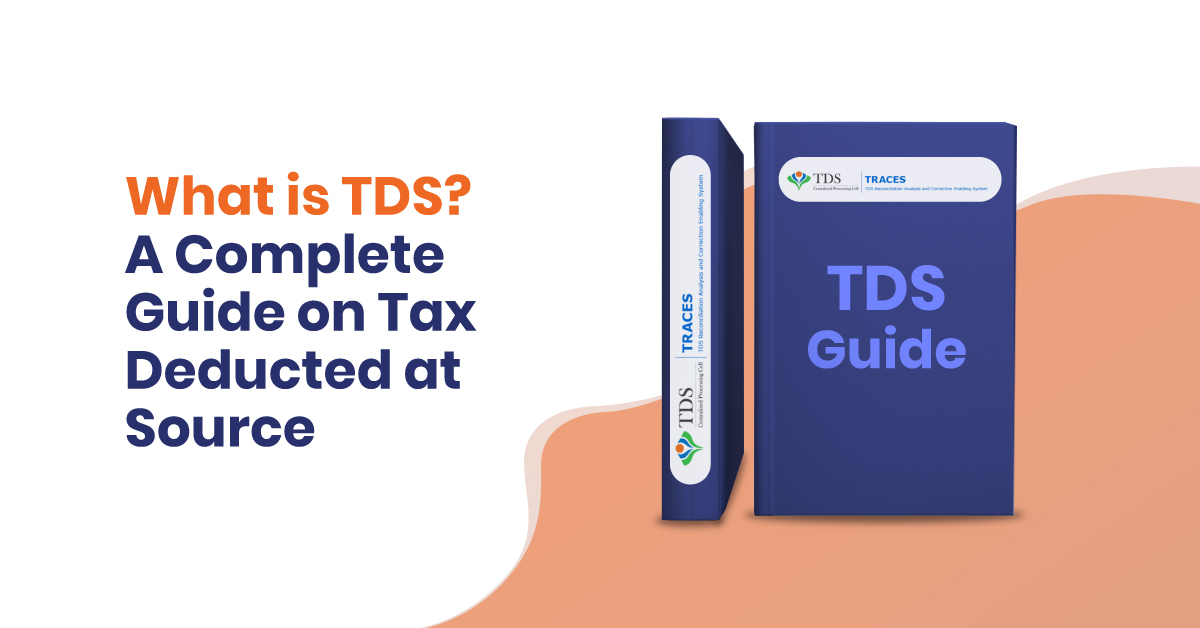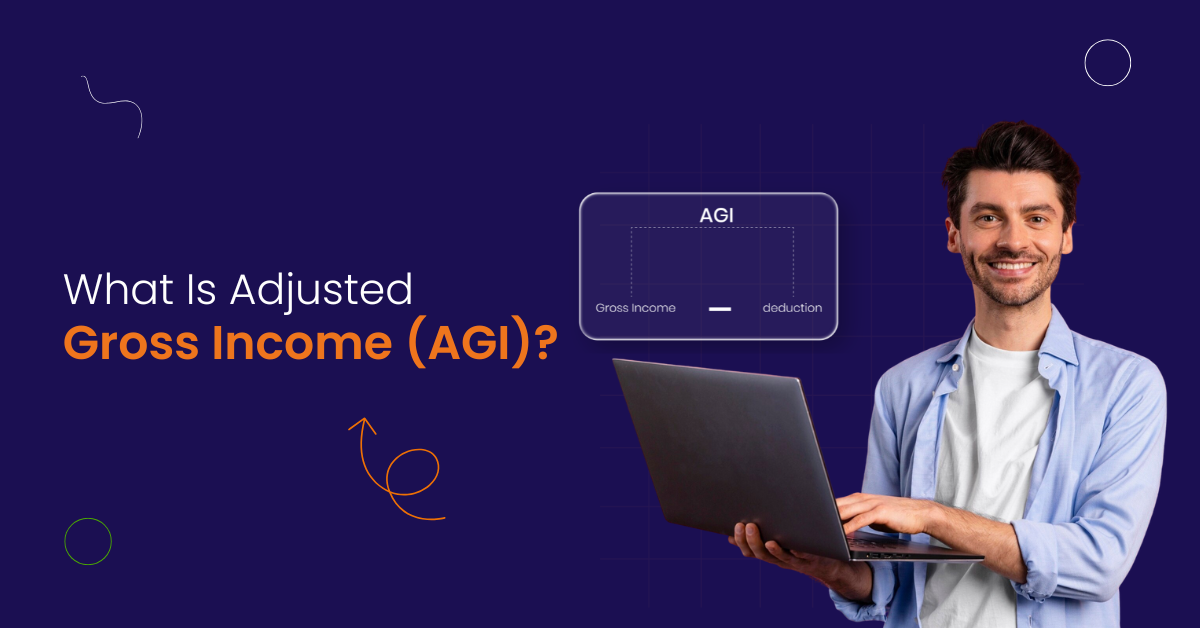Every time a salary is paid, a rent cheque is issued, or professional fees are settled, an amount is deducted from the payer’s end. This deduction is known as Tax Deducted at Source or TDS.
TDS is governed by the Income Tax Act, 1961, which ensures that the tax is collected rightfully at the source itself when income is generated and not just at the end of the year. So, understanding TDS and how taxes work in India becomes very important for everyone, may that be salaried employees, consultants, landlords, or business owners.
In this article, let’s understand how TDS functions, who deducts it, and where it applies.
Why Does TDS Exist in the First Place?
The income tax department introduced the TDS mechanism to prevent last-minute tax evasion. Instead of waiting for taxpayers to pay income tax at the end of the financial year, the government collects it bit by bit through specific TDS deduction points.
The system shifts responsibility from the receiver to the person deducting TDS, be it employers, banks, or tenants, ensuring that tax is deducted upfront and deposited with the government.
Here’s how it benefits everyone:
- It ensures consistent tax payment throughout the year
- It widens the net for tracking taxable transactions
- It reduces reliance on voluntary tax filing alone
How Does TDS Work?
Imagine you’re paying your consultant an amount. But instead of transferring the full amount, you deduct tax (as per the relevant TDS rate) and pay the balance only. The deducted amount goes to the income tax department using the deductor’s tax deduction account number (TAN).
Here’s what happens:
- Payer deducts TDS before releasing payment
- Deposits it with the government
- Issues a TDS certificate to the recipient
- The recipient gets a tax credit during their income tax return filing
All these steps are monitored by the income tax portal, reducing room for error or ambiguity from calculation to TDS payment.
Types of Income That Attract TDS
Whether you’re receiving interest or paying rent, TDS provisions apply across a wide range of specified payments. The aim? Prevent tax leakage before money leaves your hands.
Here are some common TDS scenarios:
| Income Type | Who Deducts TDS | When It’s Applicable |
|---|---|---|
| Salary payments | Employer | As per the income tax slab |
| Rent payments | Tenant or company | If rent exceeds ₹50,000/month |
| Interest income | Banks/financial institutions | Above ₹10,000/year |
| Professional fees | Payers of service | Above ₹30,000 in a financial year |
| Fixed deposits | Bank | If interest exceeds the threshold |
| Capital gains | Mutual fund houses | On dividend income (not on gains) |
| Cash withdrawals | Bank | Over ₹1 crore in a year |
From savings account interest to house property rent, TDS touches nearly all taxable income streams.
Difference Between TDS and Income Tax
TDS is not a separate tax; it’s part of your total tax liability. Think of it as a pre-payment against your full income tax obligation. During tax season, you calculate your total income, adjust for deductions, and file your return. The TDS already deducted is set off against your actual tax liability.
So, if your TDS deduction becomes more than the tax obligations, you get a TDS refund. If it is less, you need to pay tax as advance tax or self-assessment.
What Happens If You Overpay or Underpay TDS?
Let’s say your bank deducts TDS on interest earned from your savings accounts, but your annual income is below the taxable limit. You can:
- Submit Form 15G or 15H (for senior citizens) to avoid deduction
- Or claim a TDS refund during income tax return filing
Similarly, if an employer deducts excess TDS or if investment proofs are submitted late, the difference is adjusted when you file.
TDS Rates and Thresholds That Matter
TDS isn’t deducted randomly. It follows pre-defined TDS rates based on:
- Type of specified payment
- Who receives it (individual, company, NRI)
- Applicable taxable income thresholds
Examples:
- Salary payments: Based on your declared income tax slab
- Fixed deposits: 10% if interest exceeds ₹10,000 per year
- Rent payments: 5% if above ₹50,000/month for individuals
- Professional fees: 10% for payments exceeding ₹30,000
The income tax department updates these limits, and you can check the latest thresholds on the income tax portal. If your income is below the taxable limit, and tax is still being deducted at source, you can:
- Submit Form 15G/15H
- Or claim a TDS refund when filing your income tax return
TDS on Salary Payments
Employers are legally required to deduct TDS from employee salaries as per Section 192 of the Income Tax Act, 1961. Here’s how it works:
- Tax is deducted every month based on annual income
- Declarations (HRA, LIC, home loan, etc.) reduce the taxable income
- Final computation aligns with your income tax slab
Failing to deduct TDS correctly or not depositing it on time can result in penalties for the employer.
TDS on Interest Income
Both savings account interest and fixed deposits attract TDS:
- For savings: Only when bank interest crosses ₹10,000 per year
- For FDs: 10% TDS under Section 194A if annual interest exceeds ₹40,000 (₹50,000 for senior citizens)
What if your annual total income is below the taxable limit? Then:
- Use Form 15G (under 60 years)
- Use Form 15H (senior citizens)
Banks, being the person responsible for deducting TDS, must act accordingly.
TDS on Professional Fees and Rent
If your business pays consultants, freelancers, or landlords, the Income Tax Act mandates that you must deduct tax before payment.
Here’s what you need to remember:
- Professional fees: TDS at 10% for payments over ₹30,000/year
- Rent payments: 5% TDS for rent above ₹50,000/month to individuals (under Section 194-IB)
- This applies to both personal and business payments if thresholds are met
Businesses should automate this, especially if they make repeated actual payments across months.
TDS on Cash Withdrawals and Mutual Funds
Let’s talk about two modern scenarios:
1. Cash Withdrawals:
If you withdraw over ₹1 crore in cash annually from your bank, 2% tax is deducted on the amount above that threshold. It discourages large cash transactions and promotes traceable payment modes.
2. Mutual Funds:
- Capital gains from mutual funds are not subject to TDS
- Dividend payouts attract 10% TDS under Section 194K if exceeding ₹5,000
These provisions apply to retail investors too, not just institutions.
Due Dates for TDS Payment and Filing
Timing matters in taxation. Here’s what you must know:
1. TDS Payment Deadlines:
- If TDS is deducted at source in a month, it must be deposited by the 7th of the following month
- Example: If TDS is deducted in May, deposit it by 7th June
2. TDS Return Filing:
Must be done quarterly:
- Q1 (Apr–Jun): 31st July
- Q2 (Jul–Sep): 31st Oct
- Q3 (Oct–Dec): 31st Jan
- Q4 (Jan–Mar): 31st May
Returns must include:
- TAN of the person deducting TDS
- PAN of the recipient
- Type of tax deducted
- Amount paid
- Nature of specified payments
TDS Refunds and Excess Tax Deducted
Did your bank or employer deduct more TDS than needed? It happens. But the solution is simple. Just file your income tax return. If your total tax liability is lower than what’s already paid through TDS:
- The income tax department processes a refund
- You get the excess TDS credited to your account
Make sure:
- Your PAN is linked correctly
- All deductions are reflected in Form 26AS
- A valid bank account is mapped to your PAN
What Is a TDS Certificate and Why Does It Matter
After deducting and depositing tax, the person responsible for deduction must issue a TDS certificate to the recipient.
There are two common types:
- Form 16: Issued by employers for salary payments
- Form 16A: For professional fees, interest income, and other specified payments
These certificates contain:
- Name and PAN of the deductee
- TAN of the deductor
- Details of income paid and tax deducted
- Dates of actual payment and deposit
Without this document, recipients can’t claim the tax credit during income tax return filing.
Role of the Income Tax Department in TDS
Behind every TDS deduction, there’s a set of compliance checks led by the income tax department. It’s not just about collecting tax; it’s about accountability.
The department:
- Tracks every deduction via PAN-TAN mapping
- Monitors the mismatch between TDS payment and income tax return claims
- Enforces action on defaults or tax evasion
- Publish your Form 26AS, a consolidated view of all TDS deducted
Timely filing, matching statements, and payment reconciliation avoid queries, notices, or penalties.
Does TDS Apply to Everything?
Not quite. Here’s how the application varies:
1. TDS is Applicable On:
- Salaries
- Rent payments
- Contractor or professional fees
- Interest income from fixed deposits, savings accounts
- Cash withdrawals > ₹1 crore
- Dividend from mutual funds
- Lottery winnings
2. TDS is Not Applicable On:
- Capital gains from mutual fund sales
- Small-value reimbursements
- Low-interest earnings below the threshold
- Any income that’s below the taxable limit (when Form 15G/15H is submitted)
Final Word: Why TDS Is More Than Just a Deduction
Managing TDS across multiple departments, vendor categories, and salary bands brings errors, delays, or penalties.
TDS isn’t just about compliance. It’s a financial backbone, ensuring timely tax payment, improving national revenue management, and giving employees and vendors clarity.
It is always a good idea to have Payroll software for your business. They can help you set rules to deduct TDS across all salary slabs, contracts, and even for recurring professional fees, all auto-synced with your pay cycle.
Want your payroll to match real-time tax deductions with investment declarations and slab logic?
Frequently Asked Questions
1. What is TDS, and how is it different from income tax?
TDS (Tax Deducted at Source) is a mechanism to collect tax during income generation, while income tax is the final assessment of total tax liability. TDS helps pre-collect taxes in chunks.
2. Who deducts TDS?
Any individual or organisation making specified payments beyond threshold limits, like salaries, professional fees, or interest income, must deduct TDS and deposit it to the government.
3. What if my income is below the taxable limit?
Submit Form 15G (for non-seniors) or Form 15H (for senior citizens) to avoid TDS on savings account interest or fixed deposits. Or, file for a TDS refund later.
4. What happens if the payer doesn’t deduct tax?
If the payer deducts incorrectly or doesn’t deposit the amount, they’re liable for interest, penalties, and even prosecution under the Income Tax Act.
5. Where do I check how much TDS was deducted?
Log in to the income tax portal, and download Form 26AS using your PAN. It shows all TDS deducted under your account during the financial year.
6. Is TDS mandatory for NRIs?
Yes. Special TDS rates apply for NRIs receiving interest income, dividends, rent, or capital gains. These are higher and vary by the type of payment.
7. When is the TDS return due?
Quarterly:
- 31st July (Apr–Jun)
- 31st Oct (Jul–Sep)
- 31st Jan (Oct–Dec)
- 31st May (Jan–Mar)
Missing deadlines triggers a fine of ₹200/day until filed.
8. What is a tax deduction account number (TAN)?
It’s a 10-digit alphanumeric number mandatory for anyone who is required to deduct tax. It’s different from PAN and is used for filing tax deducted returns.
9. Can TDS be claimed as a tax credit?
Yes. It reduces your actual tax liability. When you file your income tax return, the tds credit already deducted is subtracted from your total due.
10. How does Bharat Payroll handle TDS?
From deduction to return filing, Form 16 generation to employee communication, Bharat Payroll automates every step. It maps income with real-time tax deduction and keeps you compliant with the Income Tax Act.






